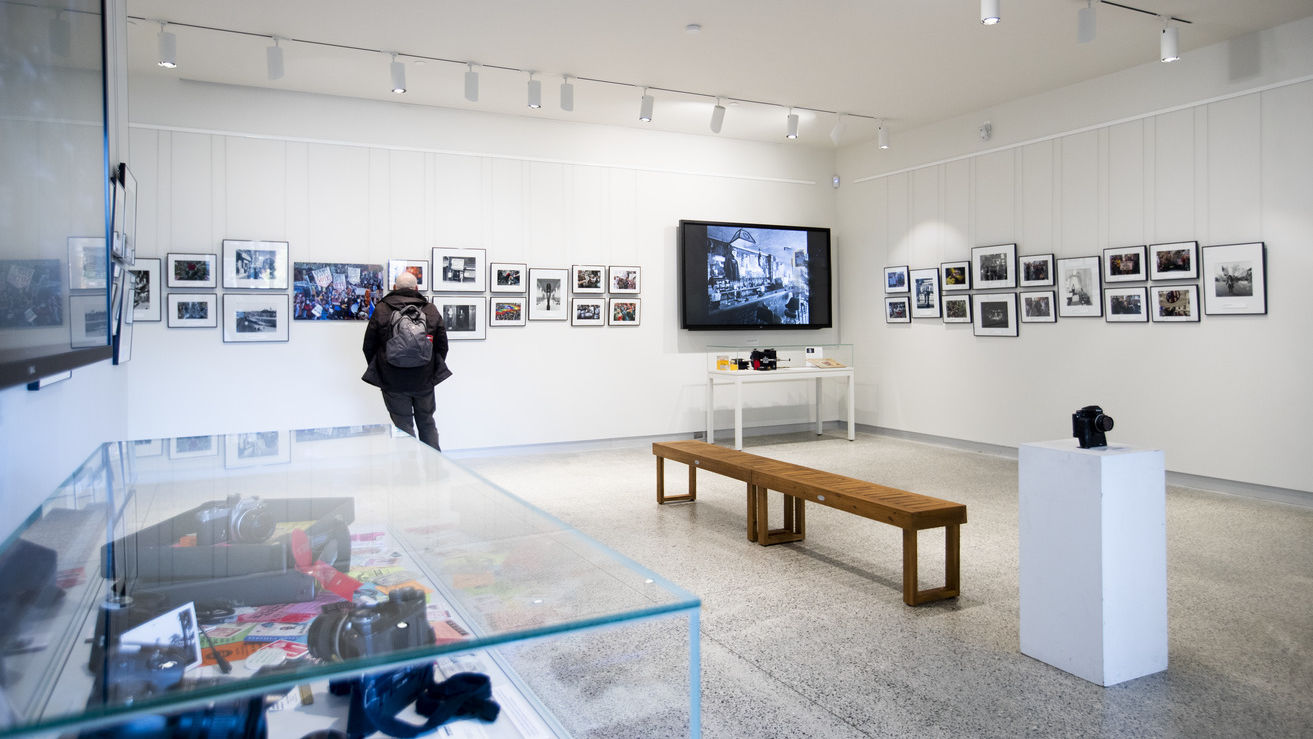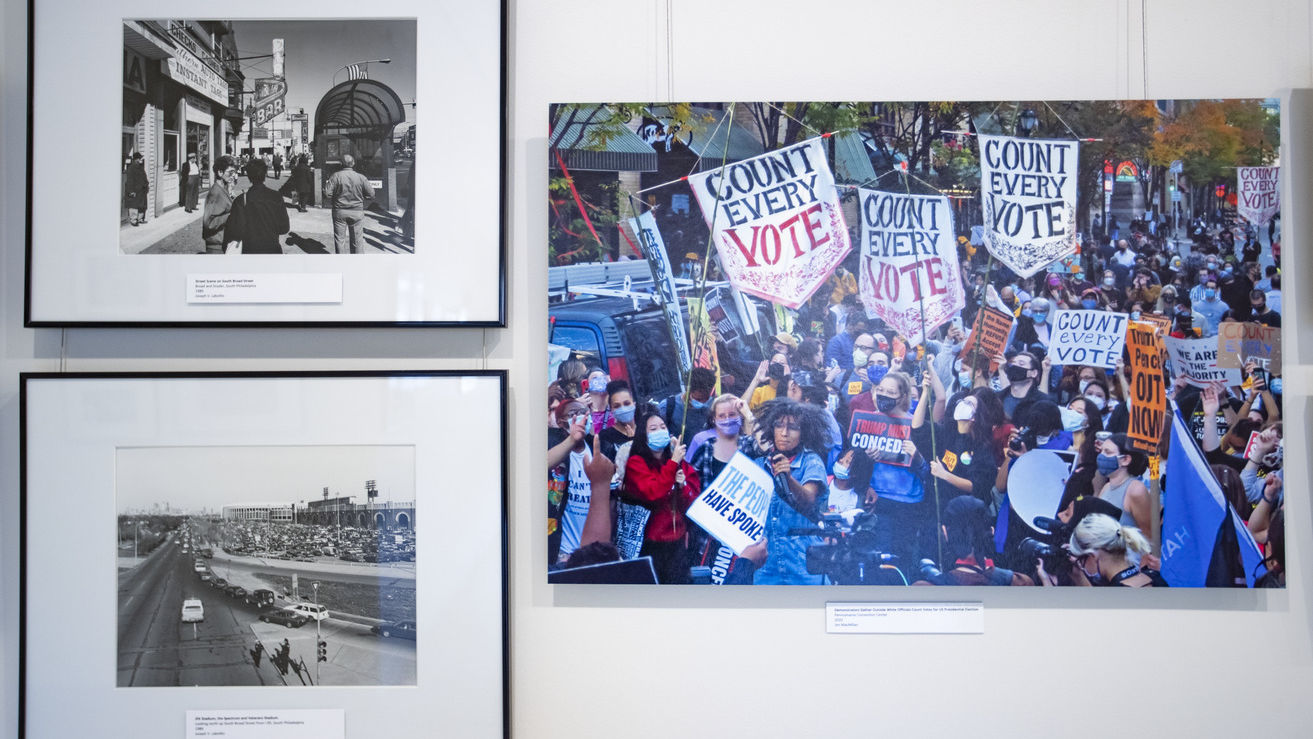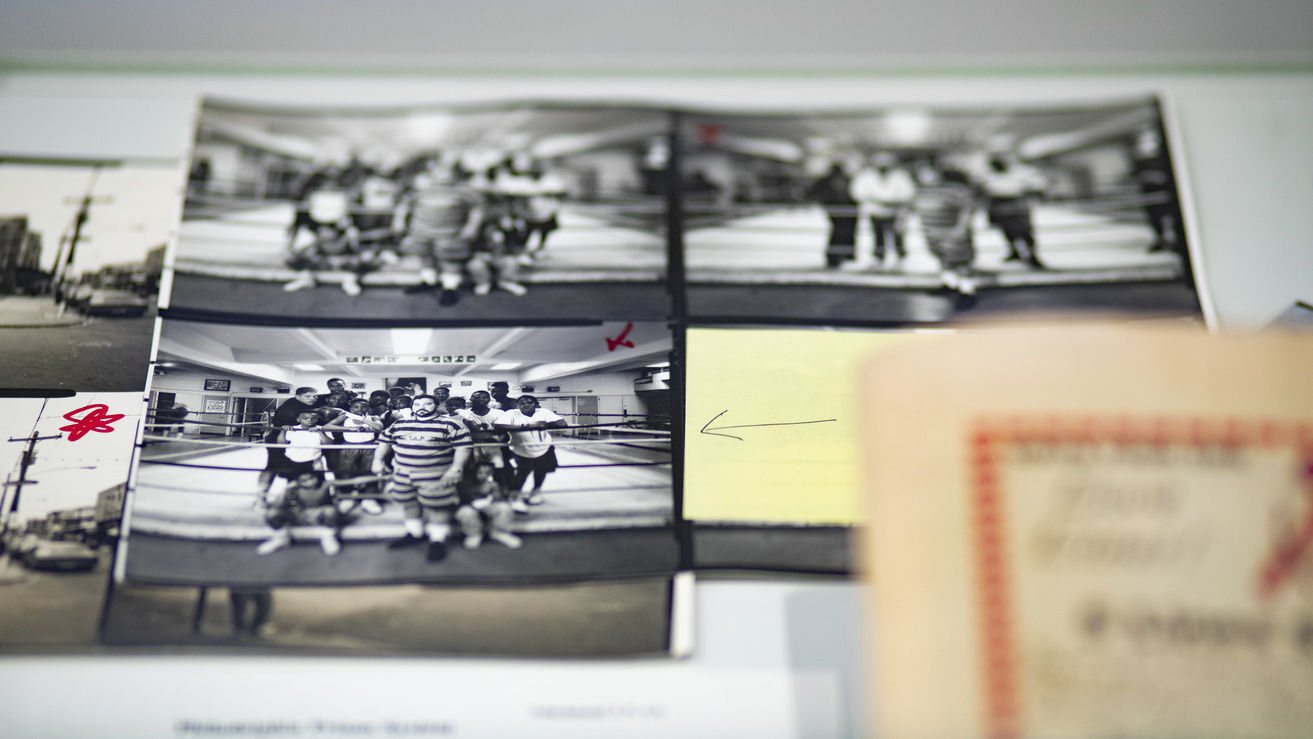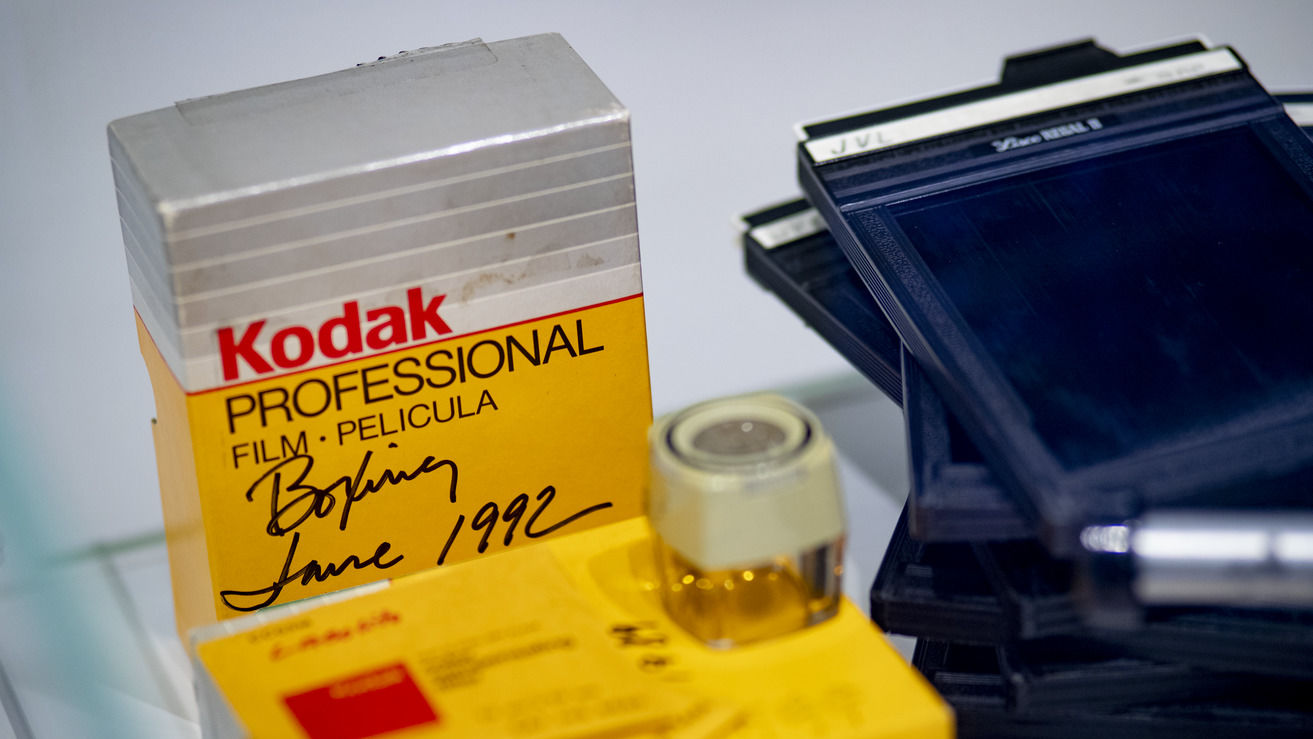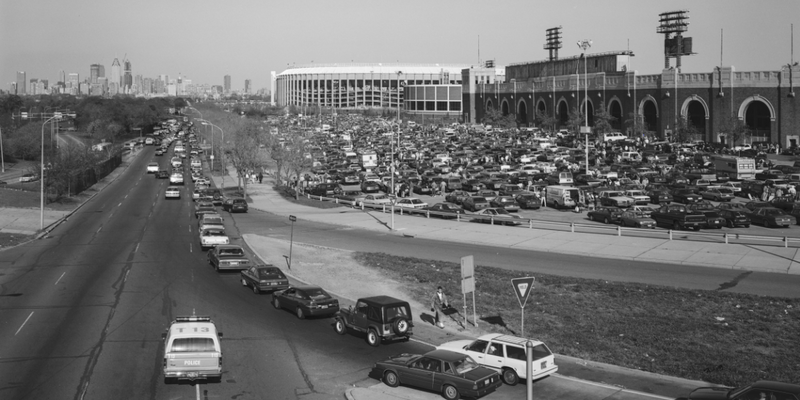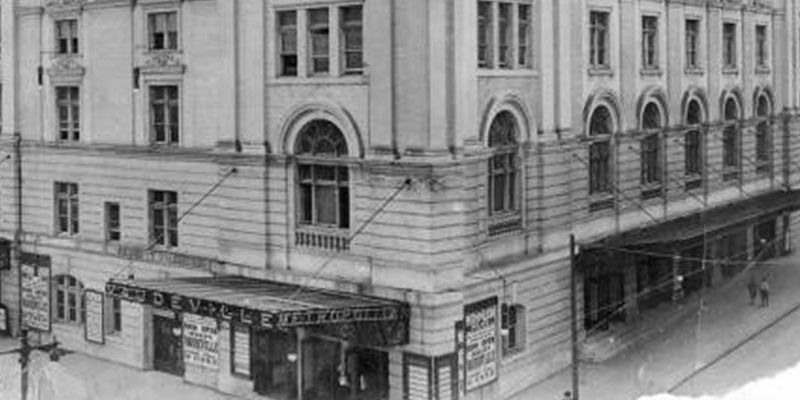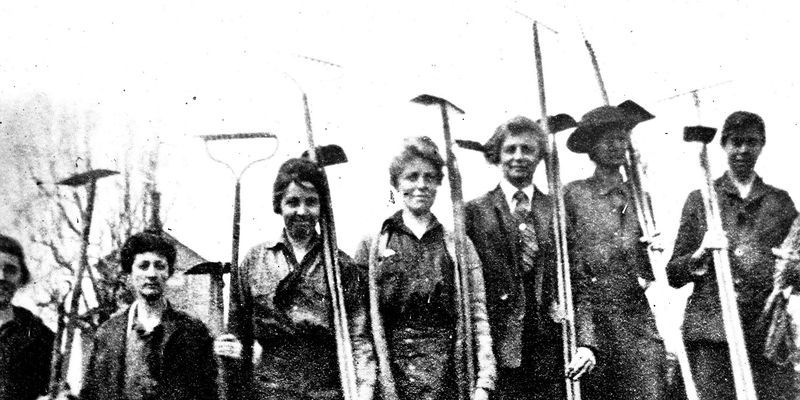Temple hosts rare photo exhibit of Philadelphia’s history
Charles Library will host a panel discussion with photographers Joseph V. Labolito and Jim MacMillan about their photography of Philadelphia at 3 p.m. on Friday, Dec. 8.
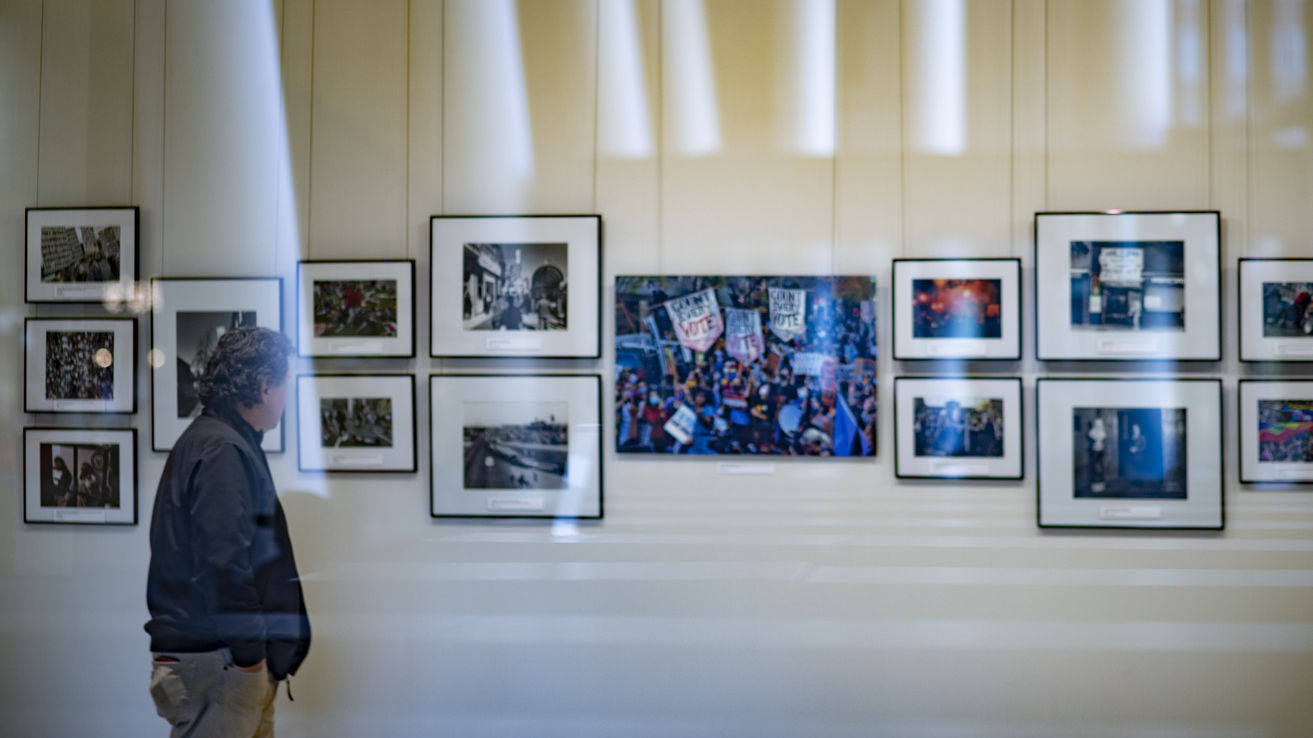
After months of anticipation, Joseph V. Labolito walked into the Charles Library on Nov. 13 for the grand opening of its fall exhibit.
The exhibit explores decades of photographs that Labolito, a senior photographer at Temple University for the last 27 years, and fellow photographer Jim MacMillan shot during some of the most pivotal periods of Philadelphia’s history, and for the first time, the photos will now be shared with the larger Philadelphia community.
“I am most proud of the longevity and experiences I had in Philadelphia to build this documentary portfolio of photos that can be used for research by students, professors and the next generations years from now at Temple,” Labolito said. “I just had a grandchild and someday she may walk in there and be amazed by how different things looked in the city decades ago.”
From now through Sunday, March 31, 2024, Portraits of Philadelphia: Photographs by Joseph V. Labolito and Jim MacMillan, 1981–2023, will be on display on the first-floor exhibit space at Charles Library. The exhibit is free and open to the public. On Friday, Dec. 8, at 3 p.m., Labolito and MacMillan will also take part in a special panel discussion, which will be moderated by Sarah Glover, vice president for news and civic dialogue at WHYY. Like the exhibit itself, the panel discussion is free and open to the public.
The two photography collections reside in Temple’s Special Collections Research Center (SCRC), a principal repository and steward of the library’s rare books, manuscripts, archives, and university records.
“The exhibit will introduce the community to rare historical images of Philadelphia throughout the 20th and 21st centuries and encourage students, professors and researchers to visit the archives and investigate how they can use primary source materials to study that history,” said Brenda Galloway-Wright, interim director of Temple University Libraries and SCRC.
“Having the Labolito and MacMillan photography collections in Temple’s SCRC provide a broad, deep and richly textured visual record of life in Philadelphia over the past four decades,” said Joesph Lucia, dean of Temple University Libraries. “Adding these unique materials to our holdings significantly enhances the documentary record of our city that it is our mission to acquire, curate and preserve.”
MacMillan is a former photojournalist who still takes new pictures occasionally. The Boston native also serves as assistant director of the Logan Center for Urban Investigative Reporting at the Klein College of Media and Communication. He worked for the Associated Press in Boston and traveled to Baghdad during the war in Iraq, for which his team won the Pulitzer Prize. His other notable work was coverage of the Sept. 11 attacks.He also captured a pictorial history of demonstrations in Philadelphia during his career, which fits well in SCRC.
“I photographed a lot of demonstrations about stopping wars, economic justice, ending poverty and meeting the needs of vulnerable communities,” he said. “But also niches like demanding better accessibility on SEPTA (Southeastern Pennsylvania Transportation Authority) for people with disabilities, a protest to raise concerns about bioengineered food and the rights of skateboarders.”
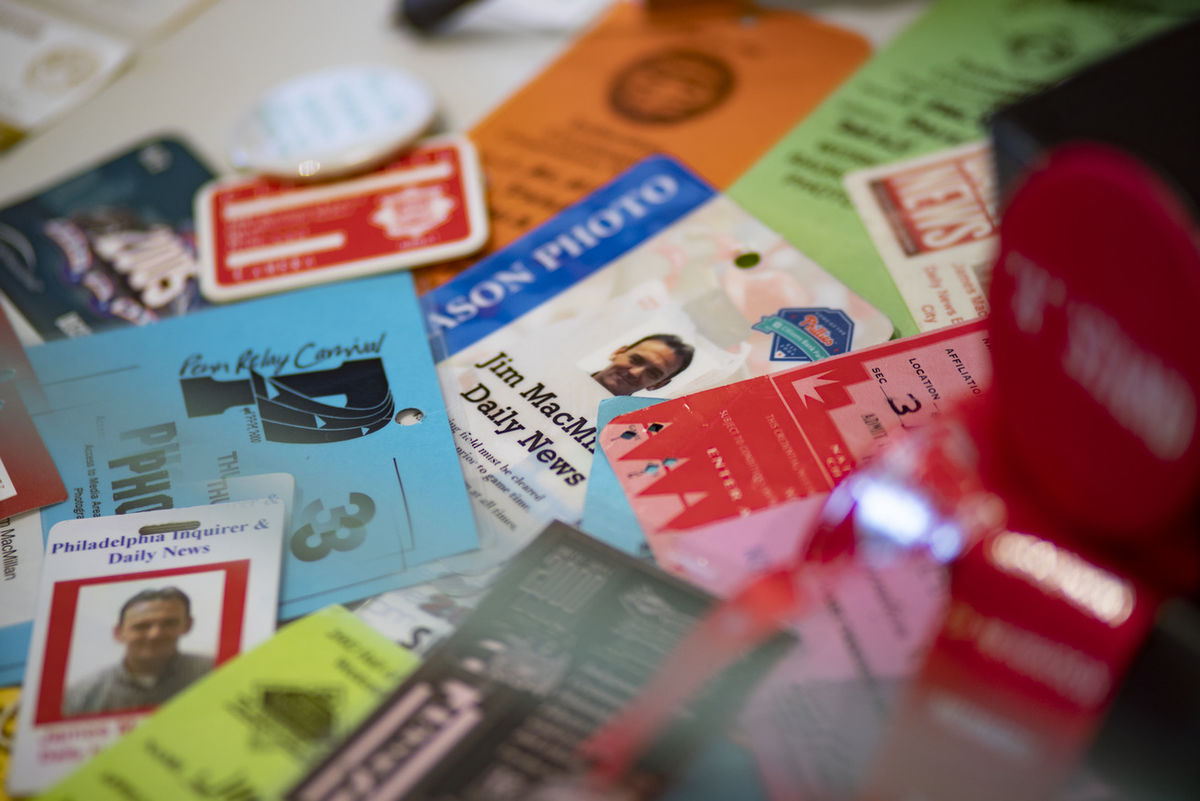 Jim MacMillan is the assistant director of the Logan Center for Urban Investigative Reporting at Klein College, as well as founder and director of the Philadelphia Center for Gun Violence Reporting. (Photography by Ryan S. Brandenberg)
Jim MacMillan is the assistant director of the Logan Center for Urban Investigative Reporting at Klein College, as well as founder and director of the Philadelphia Center for Gun Violence Reporting. (Photography by Ryan S. Brandenberg)
There is one photograph that MacMillan shot of thousands of people marching down the streets of North Broad Street protesting the Iraq War in 2003. It illustrates the power of the underdog and encouraged MacMillan to continue capturing images of protests.
“Philly is a hardscrabble, scrappy, underdog city, and I always loved the underdog story. People in the city may feel they’re not getting their fair share, so they are demanding to be heard,” said MacMillan, who also spent 17 years as a photojournalist at the Philadelphia Daily News. “They were the voices and faces of Philadelphia for me, so recording it felt important, and sharing them now seems valuable, especially with the recent uptick in demonstrations and activism around the country.”
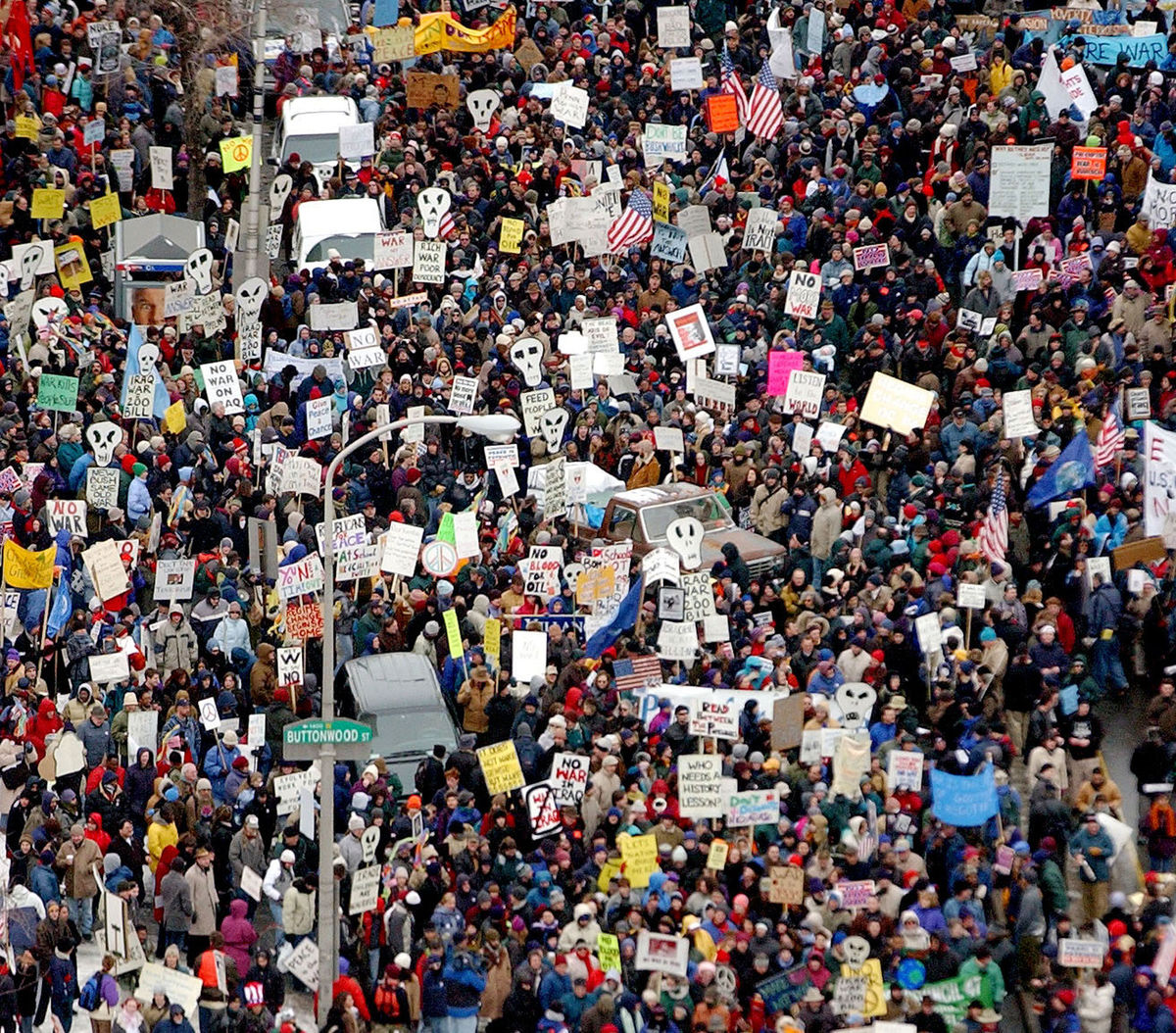 A large gathering of people protesting the Iraq War march down North Broad Street on Feb. 15, 2003, from Jim MacMillan’s career as a photographer at the Philadelphia Daily News. (Photography by Jim MacMillan)
A large gathering of people protesting the Iraq War march down North Broad Street on Feb. 15, 2003, from Jim MacMillan’s career as a photographer at the Philadelphia Daily News. (Photography by Jim MacMillan)
Labolito has spent the last 40 years photographing an authentic perspective of people, neighborhoods and generations in Philadelphia and collecting photographs of iconic sculptures, buildings and landmarks in the city.
In one such photo, he photographed three generations of Pat’s King of Steaks owners, Harry Olivieri, Frank Pasquale Olivieri and Frank Enrico “Frank Jr.” Olivieri, outside their restaurant where the first cheesesteak was made in Philadelphia. There are also photos in the collection of iconic buildings that have been demolished, like a 1991 image of the John F. Kennedy Stadium, which seated an excess of 102,000 people for concerts and sporting events in South Philadelphia. He also photographed traffic riding north on South Broad Street from Interstate 95 during a regular season NFL game of the Minnesota Vikings against Philadelphia Eagles in 1989. JFK Stadium, the Spectrum and Veterans Stadium, which have each since been demolished and replaced by the Citizens Bank Park and Lincoln Financial Field, are in the background of the image.
The native of Northeast Philadelphia said the exhibit also shows how the city is constantly evolving. And there is no better way to capture that evolution than with a camera like the 4 x 5 one that Labolito has used exclusively. For example, he photographed in black and white the construction stages of the Vine Street Expressway (1988), the Pennsylvania Convention Center (1993), the Wells Fargo Center (1995) and the Barnes Foundation (2011).
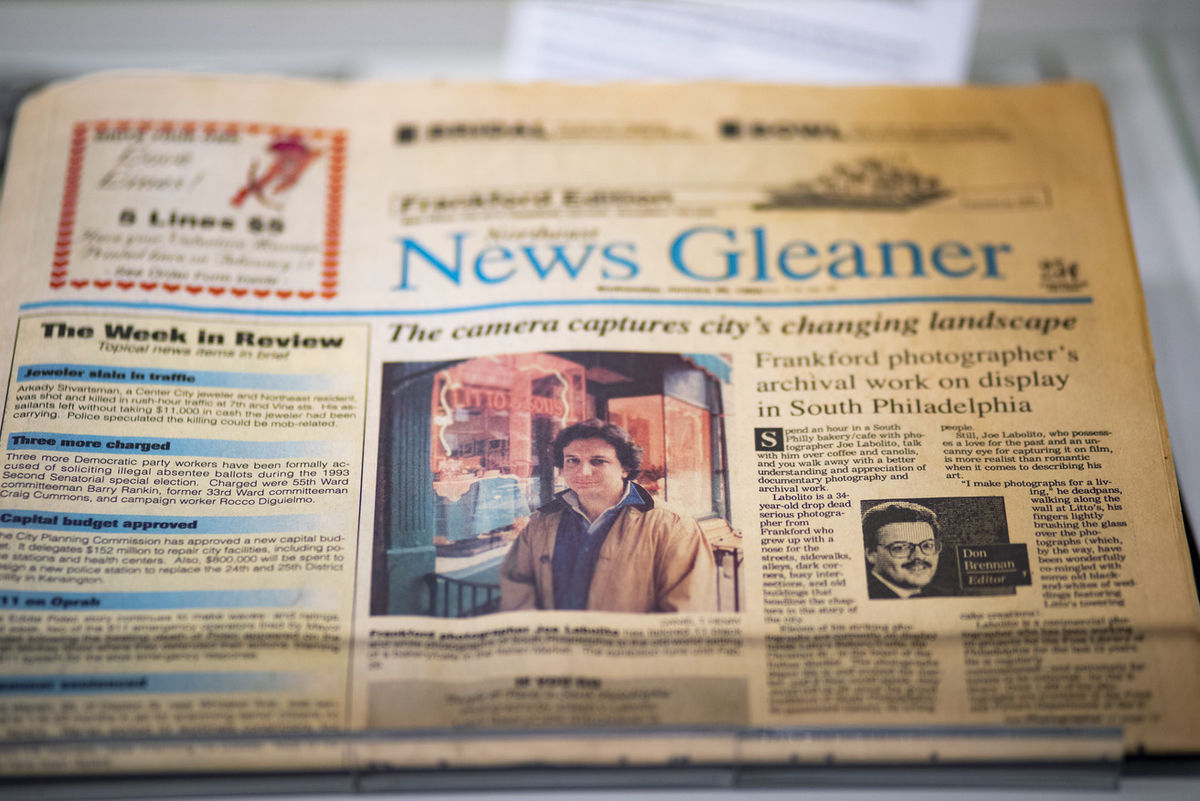
Joseph V. Labolito hosted a show at Litto Bakery, a cafe and bakery shop on Christian Street near 9th Street, in January 1995, which was a featured story in the News Gleaner, a local Northeast Philadelphia paper. (Photography by Ryan S. Brandenberg)
Much of Labolito’s photography also focuses on neighborhoods. An example of this is a photograph of two gentlemen and a little girl sitting on the steps in North Philadelphia.
“People have asked, ‘Where again did you shoot that?’ There is something very pure about the picture,” he said. “I try to show these are people in Philadelphia neighborhoods just living their lives. They’re more than the image of the neighborhood that may be presented.”
 A photograph of three residents sitting outside the front steps of a house at 3106 N. Broad St., North Philadelphia, during 1986 from Labolito’s Philadelphia Collections photography collection. (Photography by Joseph V. Labolito)
A photograph of three residents sitting outside the front steps of a house at 3106 N. Broad St., North Philadelphia, during 1986 from Labolito’s Philadelphia Collections photography collection. (Photography by Joseph V. Labolito)
“I think with my best photographs, there was a pure truth because of how I interacted with the people,” he added. “As a Philadelphian, there’s a connection with people I photograph, which makes me proud.”
